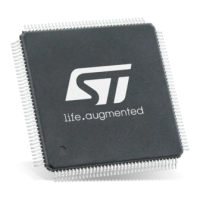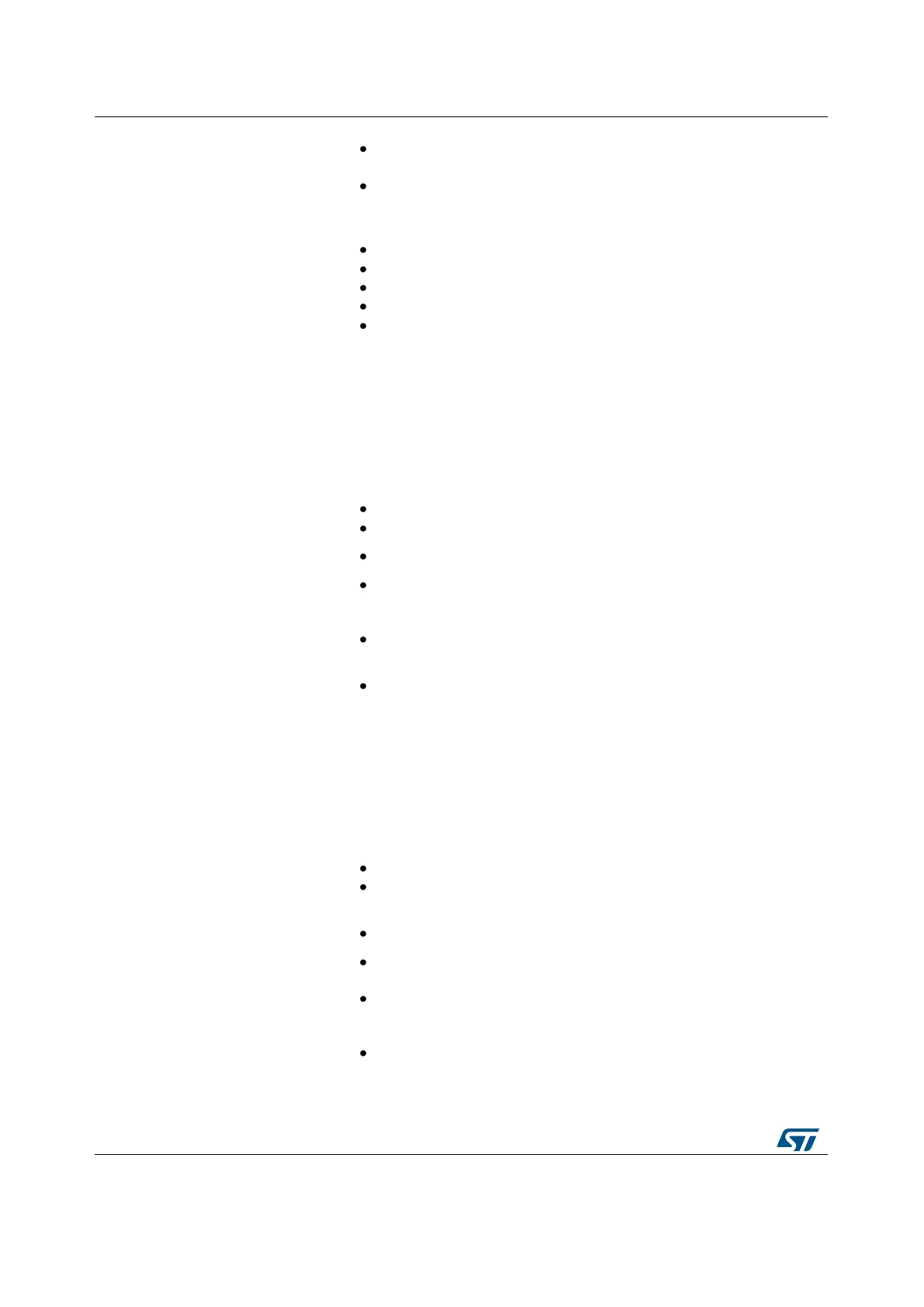external event.
This function can only be used in Output compare and PWM
modes. It does not work in Forced mode.
Macro IS_TIM_OCXREF_CLEAR_INSTANCE(TIMx) can be
used to check whether or not a timer instance can clear the
OCxREF signal on an external event.
Reference Manual to
LL API cross
reference:
CCMR1 OC1CE LL_TIM_OC_IsEnabledClear
CCMR1 OC2CE LL_TIM_OC_IsEnabledClear
CCMR2 OC3CE LL_TIM_OC_IsEnabledClear
CCMR2 OC4CE LL_TIM_OC_IsEnabledClear
LL_TIM_OC_SetDeadTime
__STATIC_INLINE void LL_TIM_OC_SetDeadTime
(TIM_TypeDef * TIMx, uint32_t DeadTime)
Set the dead-time delay (delay inserted between the rising edge of
the OCxREF signal and the rising edge if the Ocx and OCxN
signals).
TIMx: Timer instance
DeadTime: between Min_Data=0 and Max_Data=255
Macro IS_TIM_BREAK_INSTANCE(TIMx) can be used to
check whether or not dead-time insertion feature is supported
by a timer instance.
Helper macro __LL_TIM_CALC_DEADTIME can be used to
calculate the DeadTime parameter
Reference Manual to
LL API cross
reference:
BDTR DTG LL_TIM_OC_SetDeadTime
LL_TIM_OC_SetCompareCH1
__STATIC_INLINE void LL_TIM_OC_SetCompareCH1
(TIM_TypeDef * TIMx, uint32_t CompareValue)
Set compare value for output channel 1 (TIMx_CCR1).
TIMx: Timer instance
CompareValue: between Min_Data=0 and
Max_Data=65535
In 32-bit timer implementations compare value can be
between 0x00000000 and 0xFFFFFFFF.
Macro IS_TIM_32B_COUNTER_INSTANCE(TIMx) can be
used to check whether or not a timer instance supports a 32
bits counter.
Macro IS_TIM_CC1_INSTANCE(TIMx) can be used to check
whether or not output channel 1 is supported by a timer
instance.

